Man was able to rise into the air even before the motor flight. Airships appeared at the end of the 18th century, and they were used in many places in the 19th century. In the Hungarian sky - apart from some previous experiments - at the end of the 19th century, in 1896, as one of the attractions of the Millennium Exhibition in Liget, anyone could experience the wonder of air navigation. One hundred and twenty years ago, however, a balloon rose into the air for scientific purposes.
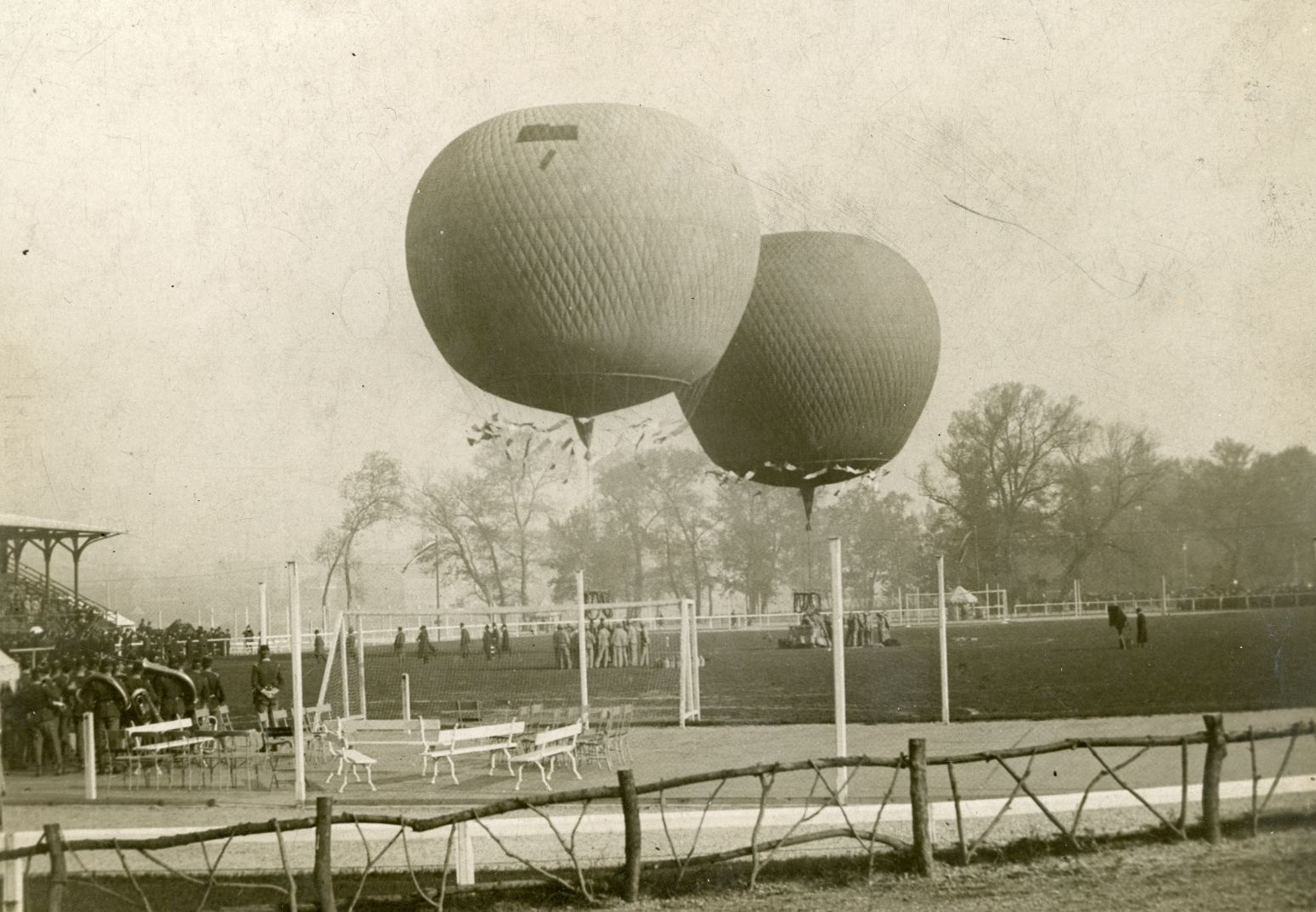
Take-off of Turul and Meteor (Hungarian Museum of Science, Technology and Transport, TFGY 4849.1)
The Hungarian Aëro-Club, which was founded on 3 March 1902 in Budapest, had great goals with the Turul balloon. The purpose of the association was stated in the 31 April 1902 issue of Pesti Hírlap:
" The aim of the club is, on the one hand, to participate in scientific research, notably in international meteorological works, in the so-called simultaneous airship voyages for the study of high air layers, and on the other hand, to introduce this noble sport in Hungary."
The Turul balloon was a gas-filled balloon, so it was not a hot air balloon, meaning it did not heat the warm air that provided the buoyancy from below, as in the balloons used today, but had a closed gas tank like an airship. The most commonly used gas was hydrogen, but it was not used at Turul, but urban gas, which was much cheaper. For this reason, the balloon was filled from the Lipótváros Gas Factory, as there was already gas to fill the balloon.
The Turul, made in Augsburg, could hold 1,300 cubic meters of gas, elevating five people. Although the black-and-white photos that survived show a gray sphere, but we know it was yellow and green, it must have been a lavish sight in the sky.
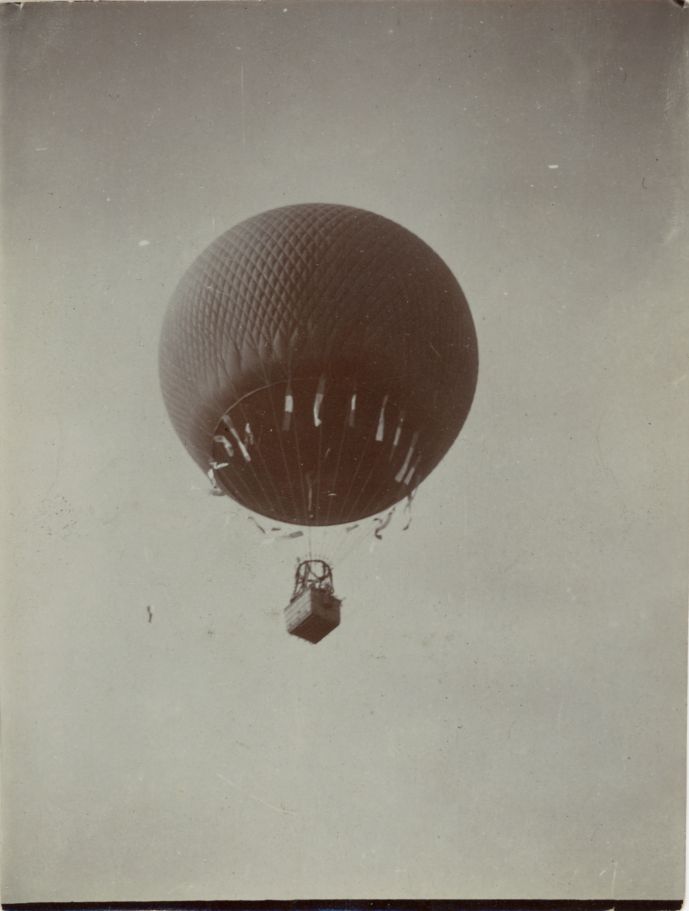
The Turul in the Air (Hungarian Museum of Science, Technology and Transport TFGY 5008)
The Hungarian Aëro-Club planned the first take-off on 1 May 1902, from Margaret Island, and was attended by the club's chief patron, Archduke Leopold Salvator, who himself had a balloon, the Meteror, which made several trips from Vienna. On this day, Meteor also took off with Turul. On 3 May 1902, the Pesi Napló wrote about the double take-off:
“ Many people from the city rushed to Margaret Island for the take-off, which was scheduled for seven o'clock in the morning. The two airships were already visible from the banks of the Danube. In the southern part of the sports field was the Meteor, in the northern part was the Turul, the bright yellow cover of which beared the name Turul in huge letters. Both were anchored with hanging sacks filled with sand and a section of passenger soldiers were assigned to assist in boarding. ”
After the speeches, travellers took their seats in both the Turul and the Meteor. However, in his greeting, Archduke Leopold Salvator made an awkward protocol mistake, regretting that he did not understand the provincial language, ie Hungarian, which is why Viktor Rákosi addressed the House of Representatives the same day, due to the use of the term “provincial language”.
The captain of the Turul and the association was Lajos Tolnay Jr. who, as a "civilian", lead the airship department of the Meteorological Institute. The other crew of the balloon was two more at that time, one of whom was Captain Ferenc Hinterstroisser, commander of the Vienna Military Air Navigation Institute, and Tihamér Lisznyai-Damó, technical adviser, vice-president of the club.
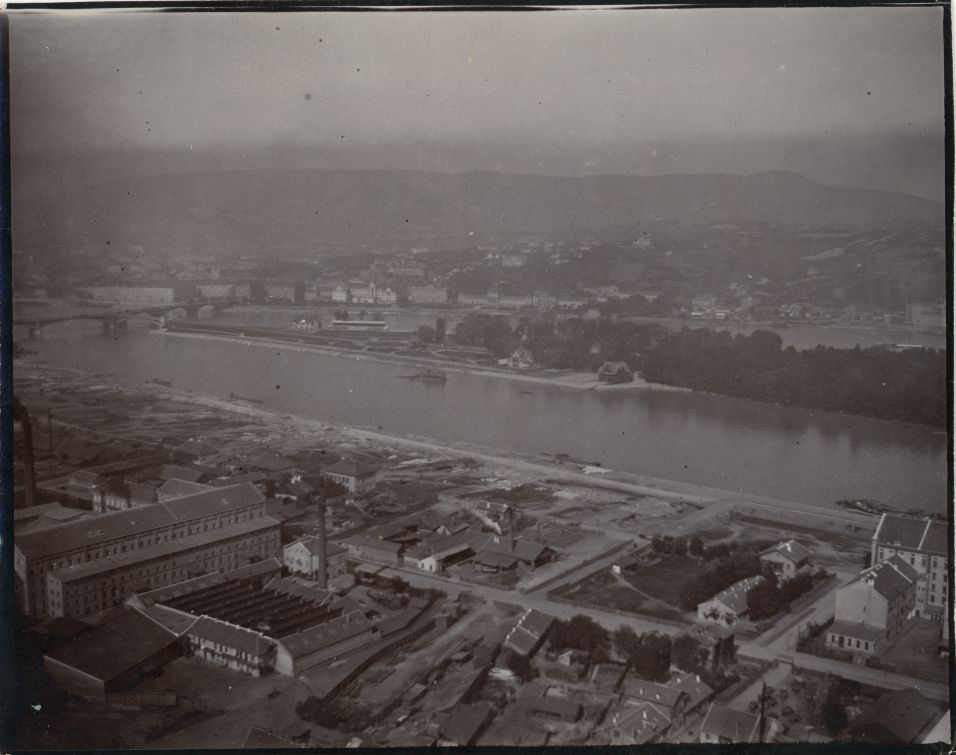
Aerial photo of Budapest (Hungarian Museum of Science, Technology and Transport TFGY 5024.1)
The airships set off at the sounds of the Rákóczi march, first the Meteor and then the Turul. The Hungarian ship first flown to 2,500 meters, drifted over Óbuda, and then stopped in the lull over Aquincum. Then some sandbags were thrown out and so they rose to 3000 meters and slowly floated towards Újpest. Later, the wind blew Turul towards Gödöllő and Vác, and it was then that they decided to land. As a smooth balloon, the Turul had no influence on where it was going, its passengers were only able to control the height by throwing out the sandbags they took with them as ballast, and then they rose or let out gas, then they sank. The landing was described in the above-mentioned report of the Pesti Napló as follows:
“ When the captain pulls the top valve and the gas rumbles out of the valve, one gets tinnitus first, then an unbearable puncture occurs in the ears and finally one becomes temporally deaf. One only sees the movement of the mouth, but hears no sound at all. And this unpleasant feeling is experienced by experienced aeronauts as well. The ship was heading for Túra as we lowered the rope. In the lands, people of the two villages worked hard and we approached the ground at a picking speed. The rope was already slamming the green sowing when Lajos Tolnay, the captain of the Aero Club, shouted at the farmers to grab the rope. This was followed by the last operation of the landing, the balloon rupture. Another valve is used for this operation, which simultaneously opens the entire balloon on its side. Like a giant big bird shot in the heart, this whole balloon collapses and falls to the ground, and of course spreads over the passengers. It was 11:45 a.m. when Turul landed. ”
They rose to a height of 4,040 meters on this day. Later, they took off several times, climbed over 5,000 meters with the balloon, reached Szeged, performed night flights with it, and organized special chasing competitions, the essence of which was that the motorists followed the balloon and the person who reached the Turul in 15 minutes after landing won.
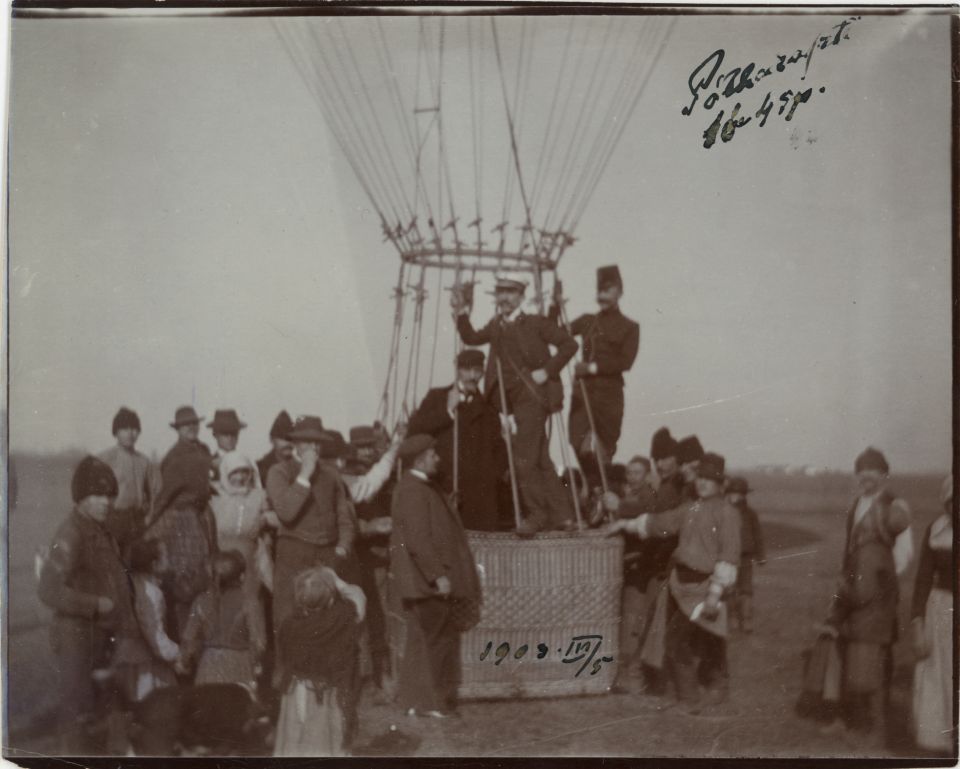
The basket of Turul (Hungarian Museum of Science,Technology and Transport TFGY 5016.1)
The Turul - which, unfortunately, is also associated with a death, as Pál Ordódy fell out of the balloon during a stormy take-off in 1903 - brought a great deal of knowledge to its users and was fundamentally successful. Not only were meteorological observations made with it, but aerial photographs were also taken.
A wicker basket of the Turul was visible in the Museum of Transport for a long time, but unfortunately it was destroyed during World War II.
Cover photo: (Hungarian Museum of Science, Technology and Transport TFGY 5006)

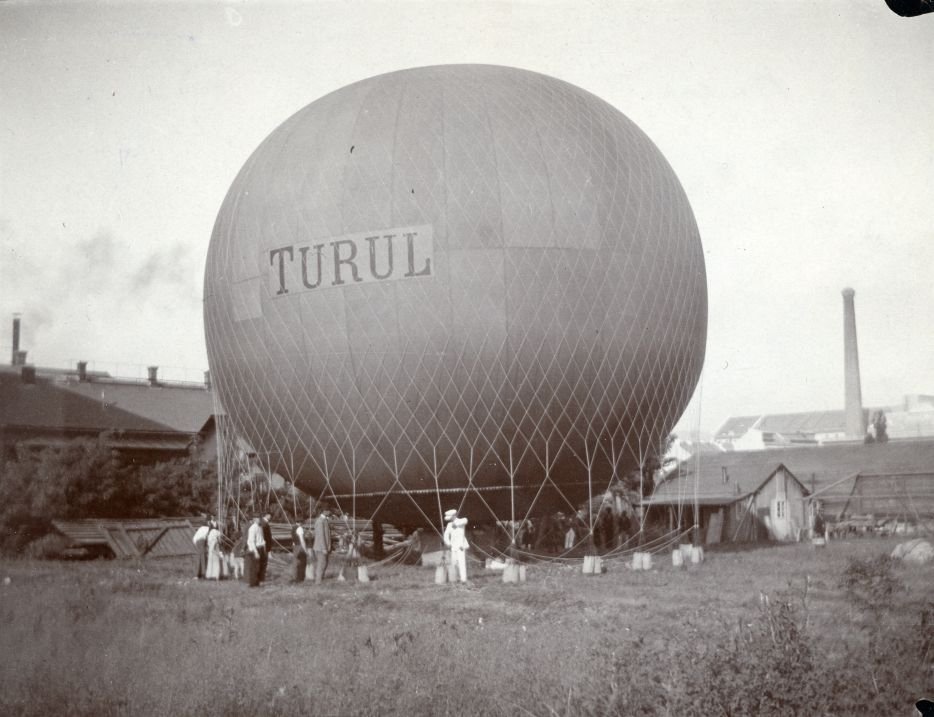


































Hozzászólások
Log in or register to comment!
Login Registration